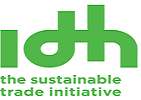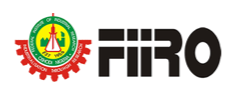Animal Feeds
IFGREEN using its ingenuity has developed a way to convert waste to Animal Feed.
Carbohydrates derived from maize are becoming very expensive as a feed input. Our High-Quality Cassava Mash thus provides an excellent low-cost alternative. Our High-Quality Cassava Mash can cut the cost of carbohydrate input by as much as ***%
This class of product has become very crucial given the growing size of Nigeria’s livestock industry which has been estimated at 18.4 million cattle, 43.4 million sheep, 76 million goats, and 180 million poultry.
The final product is meant for animal feed as high energy whole meal or as part of the regular milled animal feed.
HIGH-QUALITY CASSAVA PEEL MASH
PROFILING:
The cost of feeds accounting for a very high percentage of the cost of rearing livestock in Nigeria, in poultry, feeds take up 70% to 75% of the cost of operation. However, the cost of livestock feed is expensive drive by the high cost of key ingredients; namely maize and soybean. Producing High-Quality Cassava Peel mash from cassava peel waste to replace a sizeable percentage of maize content of feed reduces the cost of feed directly. The final product is meant for animal feed as high energy whole meal or as part of the regular milled animal feed.
It has been successfully tried with various types of livestock to good effect with the inclusion of various percentages of the fine mash while reducing the maize content at the same retaining both the nutritional quality and quantity of the resultant feed.
Targeted Market and Customers
Medium to large feed millers is the target off-takers and bulk buyers of the HQCP fine mash while the coarse mash is expected to be purchased by small to medium holders of animal Farmers. Small scale feed millers and poultry farmers have shown an active interest in HQCP fine mash and are expected to be regular customers of the IFGREEN factory.
The trend in the Industry/Sector
There is a shift from the traditional extensive method of rearing animals to either semi-intensive or intensive methods especially for rearing for commercial purposes except for small-scale animal keepers. This has led to a situation whereby animal feed is more defined and farmers, more selective and particular of the feeds. This leads to increased demand for high-quality feeds, which in turn has given rise to the proliferation of micro to small scale feed milling. These can be found on street corners and the big markets in towns and cities across the country.
Other developments in the feed milling and allied industry include:
- Population growth, changing diet, and urbanization are causing an increasing demand for animal protein and livestock products, pushing up demand for animal feed. Large-scale animal feed producers in the country are reporting an increase in production capacity.
- It is expected that demand for animal protein and livestock products will increase greatly in the next few years. According to USAID, demand for poultry products is expected to increase ten times by 2040.
- The feed mill industry remains underdeveloped mostly due to the high cost of production that could be linked to the inadequate public power supply, poor infrastructure, high inflation, poor consumer demand, and high cost of finance.
- The average cost of animal feed remains high, a situation leading causing small-scale and medium-scale animal farmers to mill their feed.
- Feeds constitute about 70 percent of the operating cost of most animal factory including aquaculture.
- The sector is the leading user of grain in the country.
- Production of grain in the country is largely rain-fed hence seasonal and at the same time, the production experiences a biennial boom and bust cycle.





